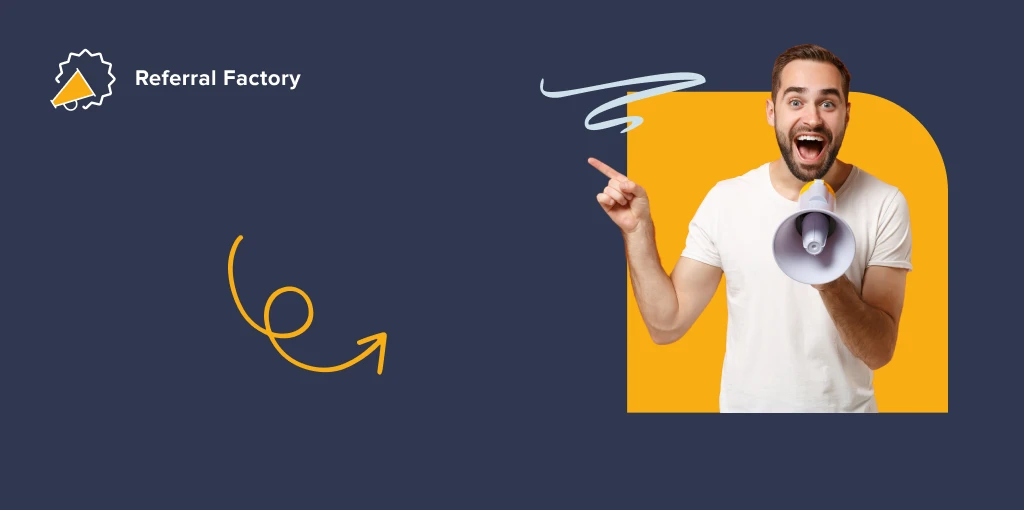Case Study: How This B2B Financial Services Business Converted 2 of Every 3 Referrals
What would you trust more: a TV ad or the advice of your best friend? If you’re like 9 out of 10 people you would trust your loved ones way more than any commercial! That’s why smart businesses implement referral programs and reward their existing customers for telling their friends about their product or service.
That’s exactly what this payment solutions company based out of the UK with incredible results. Two of every three referred leads converted into paying customers. In this case study, we break down how they achieved these results with the help of Referral Factory’s plug-and-play referral program software.
🏛️ Niche: Multinational payment solutions
💵 Business type: B2B
🌎 Location: UK & Europe
🧑💼 Size of the company: 1,000+ employees
In short, this company helps businesses save money on gas with its range of fuel cards. While referral marketing is sometimes more commonly associated with B2C, this B2B business proved without a doubt that referrals work just as well in B2B! Here’s a little spoiler: their referral program had a conversion rate of a whopping 66%, with over 5,500 referrals generated in a single year. Impressive, huh? This case study is an excellent example of B2B referral programs done right!

Table of Contents
Their Challenges (What Led Them To Referrals?)
What motivated them to start a referral program? This B2B financial services company turned to referrals for three big reasons.
👉 Challenges:
- Increase customer acquisition. Simply put, they wanted to find more customers. And, they knew that referrals tap into the power of happy clients spreading the word.
- Boost brand awareness with the RIGHT audience. They wanted to make their brand known to the right crowd. Referrals fit the bill by letting them reach a laser-targeted audience through the trusted networks of their happy customers, giving their brand a solid boost where it matters most.
- Find new marketing channels to attract more leads. They needed to improve a historically low conversion rate from leads acquired through PPC channels. They did the research and found that referrals convert at double the rate of leads generated anywhere else.
How A Referral Program Helped Them Overcome These Challenges
This business had a tough time imagining how it could scale a customer referral program to their needs. Tracking leads and organizing things across multiple regions seemed to be a headache. So, they turned to Referral Factory for help.
Since our simple referral tracking software integrates with Salesforce CRM where they track all their leads and conversions, launching and managing a referral program was a breeze. Here’s how it works: when someone makes a new referral, it gets sent straight into Salesforce and is picked up by a sales agent for further follow-up. To make sure the agent is equipped with all the details, the lead record in Salesforce even includes all the details about the person who referred them!
How Their Referral Program Works
This business chose a top-performing referral marketing strategy: a double-sided referral program in which both the person referring (the existing client) and the person invited (the new lead) get a reward for successfully converting.
🎁 What does the person referring (the existing client) get?
This referral program offers loyal customers the following rewards for referring:
- For every business that successfully signs up for a fuel card, the person referring gets a £25 Amazon voucher.
- Referring 10 businesses to their fuel card products can result in getting up to £250 worth of Amazon vouchers.
To maximize their results, when promoting their campaign, they pitched the reward as “Give £250, Get £250.” In other words, refer 10 businesses, give £250 in discounts, and get £250 in Amazon Gift Cards. Crafting the message in this way is super smart because it means referrers get a sense of just how much they can earn if they spread the word far and wide.
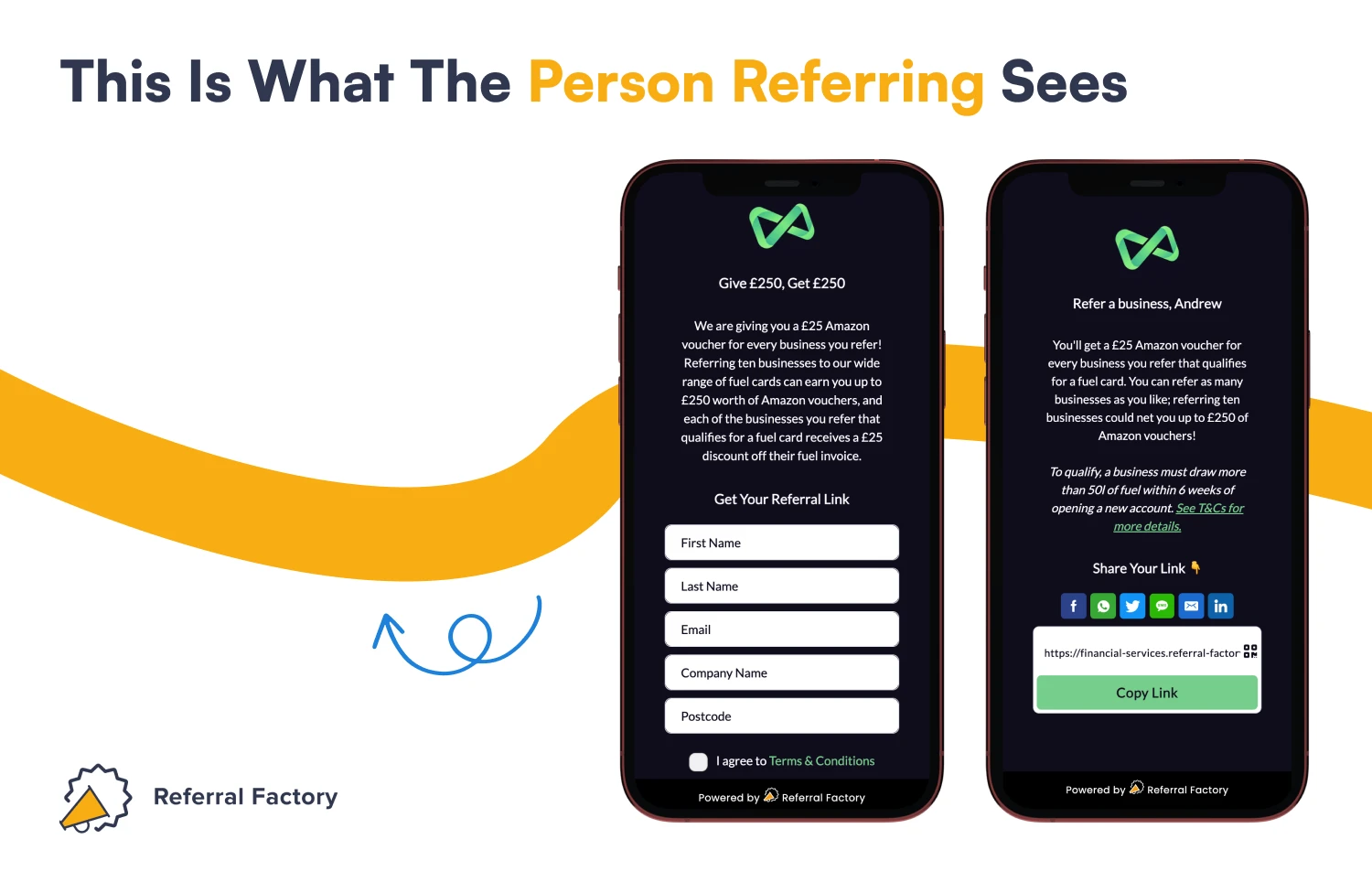
🎁 What does the person invited (the new lead) get?
Each new referred business that qualifies for a fuel card enjoys a £25 discount off its first invoice. Want to know why this double-sided referral program style is one of the top strategies for success in customer referrals? It’s not only because referred leads are more likely to convert if there’s a special something in it for them — it actually drives a higher rate of referrals because people are more likely to share something valuable with their network!
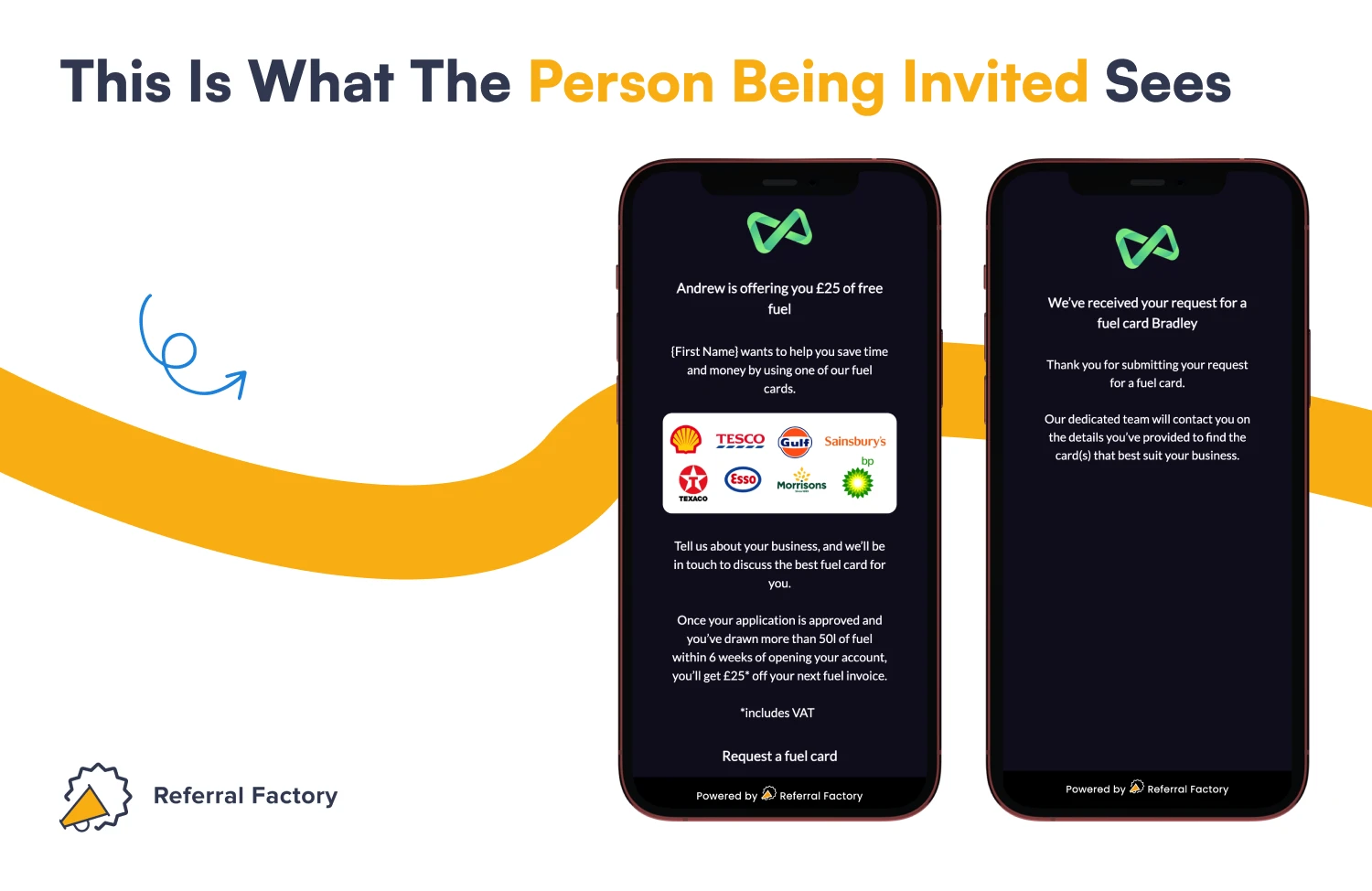
How This Business Promotes Its Referral Program
This business’s primary promotional strategy was email marketing. They didn’t get fancy — they simply asked their current clients to spread the word about their positive experiences. The email explained the offer and encouraged clients to join the referral program by registering for a referral link.Importantly, when this company decided to create a referral program, it chose not to automatically enrol clients into the program and generate referral links on their behalf but rather encouraged them to sign up for a referral link themselves. This approach aligned with their General Data Protection Regulation (GDPR) requirements. In addition to keeping them compliant, this approach had an additional upside: it meant that they could open up their referral program to anyone who wanted to join, not only their existing clients. As a result, they attracted a range of affiliates who advocated on their behalf in exchange for the referral reward.
Referral Factory’s team of experts suggested using the following strategies for further promotion:
- Including a link to join the referral program in the footer of their website.
- Prompting people to refer after a successful fuel card application (timing is everything!).
- Adding a referral widget to their website.
- Adding a link to join the referral program in all transactional emails.
- Reminding people to refer via text messages.
- Prompting newly converted referred leads to refer their network in turn (thereby maximizing the viral nature of referral programs).
Final Results & Metrics
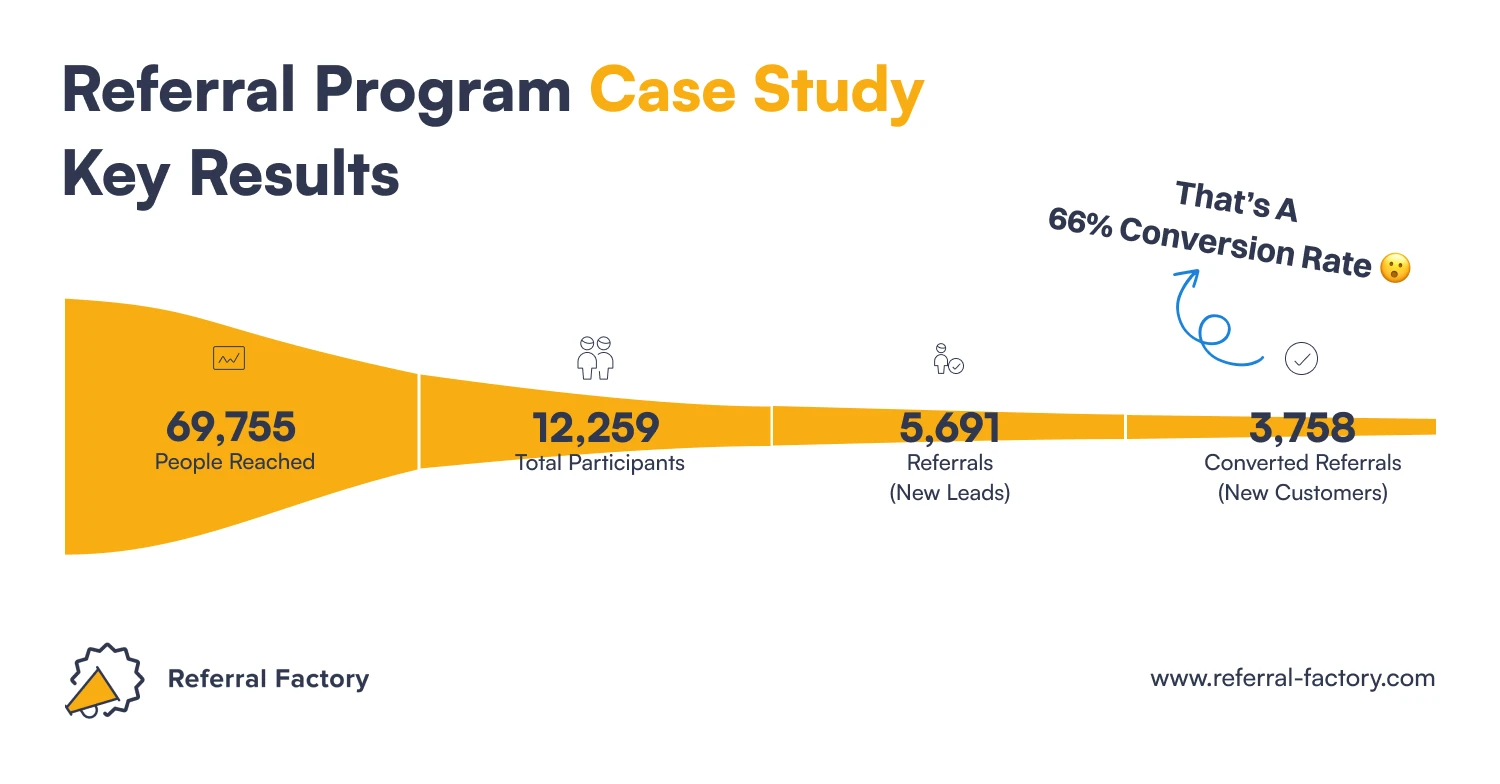
The results of this referral program case study speak for themselves! Out of a total pool of 12,259 people referring, almost half have made at least one referral. This has resulted in 5,691 leads and 3,758 conversions. That’s 3,758 brand-spanking new customers acquired in a year!
With a whopping 66% conversion rate, it’s clear that people referring are targeting the right audience when they recommend this company to their network. Two out of every three referrals ended up converting!
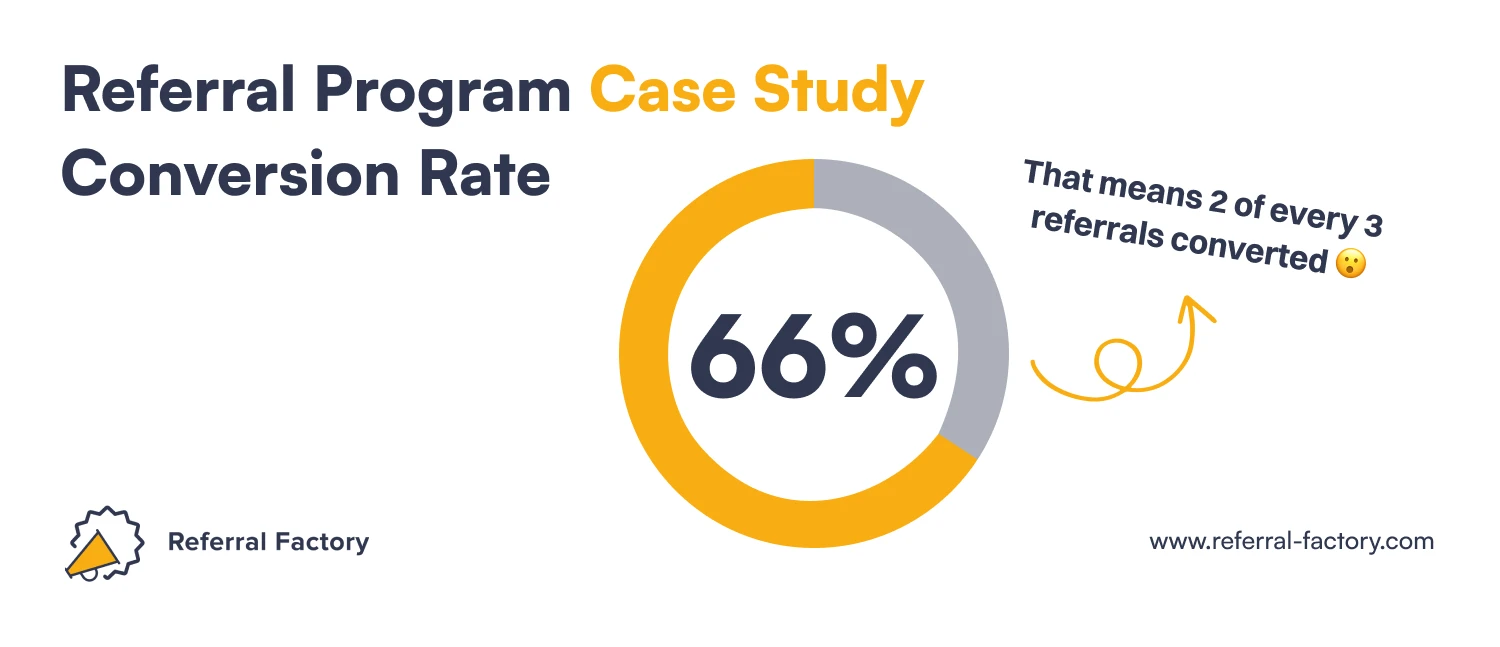
Recent stats show that the average conversion rate for B2B sales in the financial services sector is around 5%. So, it’s pretty clear that referrals are an excellent marketing channel in an industry where trust is paramount.
Of the 5,691 people who were referred to this business, 21% went on to refer at least one person themselves. In other words, the phenomenon of social proof is working to this company’s advantage with a clear viral loop effect.
Client Testimonial
“We knew that a referral program would work given our NPS scores but tracking referred leads was a headache we didn’t have the capacity for. That’s when we decided to reach out to Referral Factory for assistance. Their simple yet powerful software transformed the way we handled our referral program. Suddenly, we could easily see how well our campaigns performed across different regions and adjust as needed. But it wasn’t just about the software; Referral Factory went above and beyond to support every step of the way.”
— Regional Marketing Manager
Conclusion
Just think about these numbers: 3,758 brand-spanking new customers acquired in a year. With a conversion rate of 66%, it’s hard to imagine how much they would have needed to spend to achieve similar results through paid advertising. That’s the beauty of referrals: since they are hyper-targeted, referred leads convert at a rate better than any other marketing channel!

